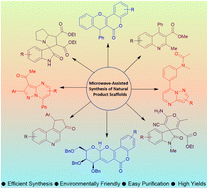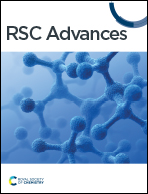Recent developments on microwave-assisted organic synthesis of nitrogen- and oxygen-containing preferred heterocyclic scaffolds†
Abstract
In recent decades, the utilization of microwave energy has experienced an extraordinary surge, leading to the introduction of innovative and revolutionary applications across various fields of chemistry such as medicinal chemistry, materials science, organic synthesis and heterocyclic chemistry. Herein, we provide a comprehensive literature review on the microwave-assisted organic synthesis of selected heterocycles. We highlight the use of microwave irradiation as an effective method for constructing a diverse range of molecules with high yield and selectivity. We also emphasize the impact of microwave irradiation on the efficient synthesis of N- and O-containing heterocycles that possess bioactive properties, such as anti-cancer, anti-proliferative, and anti-tumor activities. Specific attention is given to the efficient synthesis of pyrazolopyrimidines-, coumarin-, quinoline-, and isatin-based scaffolds, which have been extensively studied for their potential in drug discovery. The article provides valuable insights into the recent synthetic protocols and trends for the development of new drugs using heterocyclic molecules.

- This article is part of the themed collection: 2023 Reviews in RSC Advances


 Please wait while we load your content...
Please wait while we load your content...